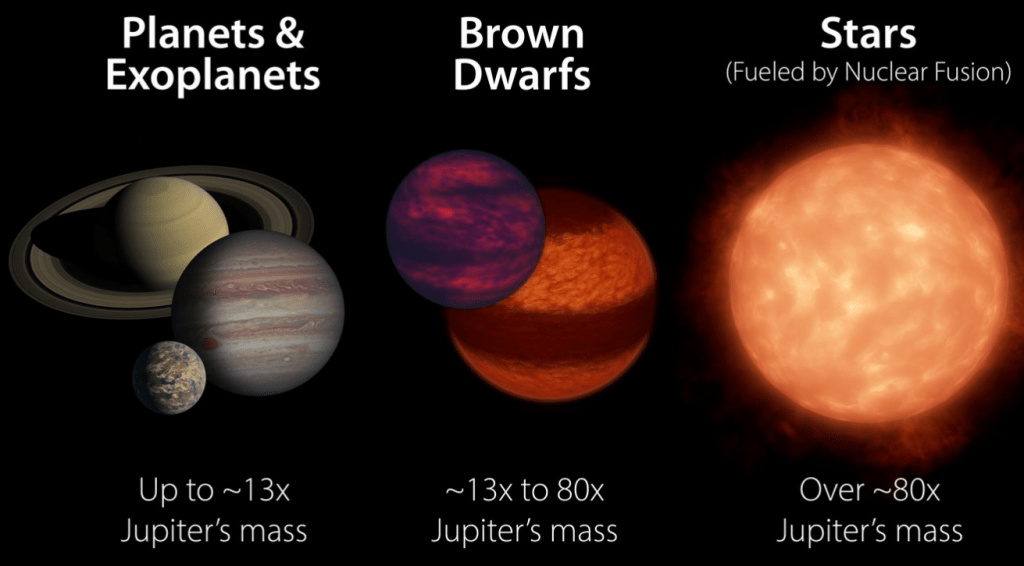The field of exoplanet photography is just getting underway, with astronomers around the world striving to capture clear images of the more than 4000 exoplanets discovered to date. Some of these exoplanets are more interesting to image and research than others. That is certainly the case for a type of exoplanet called a brown dwarf. And now scientists have captured the first ever image of exactly that type of exoplanet.
Brown dwarfs are “substellar objects” – they do not have enough mass to spark nuclear fusion in their core, and therefore were not able to become an actual star, but are much more massive than any traditional planet. The one imaged by a team of astronomers at the Subaru Telescope and the W. M. Keck observatory in Manuakea has a mass 46 times that of Jupiter.
This particular brown dwarf is interesting for reasons other than its size though. Of primary interest is its orbital path and the stellar system it resides in. The planetary system it resides in is known as HD 33632. The star in HD 33632 is a main sequence star, in many ways similar to our sun. The brown dwarf, now named very creatively as HD 33632Ab, orbits around the star at a distance of about 20 AUs (approximately the distance from Mercury to Pluto).
Credit: Paul Sutter (UT contributor) Youtube Channel
That solar distance combined with the similarities between HD 33632’s star and our sun make the existence of a brown dwarf in that system highly informative to models predicting how those systems might be formed. The image the scientists captured also provides valuable data points for the analysis of other directly imaged exoplanets. There is a chance the atmosphere of the HD 33632Ab may contain carbon monoxide and water, making it a useful barometer for comparing other exoplanets atmospheres.
Our ability to see any exoplanet’s atmosphere, even one as big as HD 33632Ab, are thanks to advances in adaptive optics and near-infrared imaging systems. Those systems on the Subaru and Keck observatories joined together to snap this unique image. Subaru leveraged it’s exoplanet hunting system SCExAO/CHARIS while Keck contributed images from a near-infrared camera called NIRC-2. These combined instruments resulted in a much more clearly defined picture than would have been possible with only one of the observatories.

Credit: NASA
This finding certainly won’t be the last application of that combination of powerful exoplanet imaging technologies. Nor will it be the last exoplanet, or brown dwarf, that we as a species will directly image. But as these images start to trickle in, what we will begin to find will hopefully become more and more fascinating as we begin to take a peek at these newly discovered worlds.
Learn More:
W. M. Keck Observatory: Direct image of newly discovered brown dwarf captured
UT: Astronomers find 100 brown dwarfs in ours neighborhood
TechExplorist: This is the direct image of a newly discovered brown dwarf
Sci-News.com: Astronomers Directly Image Brown Dwarf Around Nearby Sun-like Star
Lead Image: Direct image of the stellar system HD 33632, including the brown dwarf on the right of the screen.
Credit: W. M. Keck Observatory

